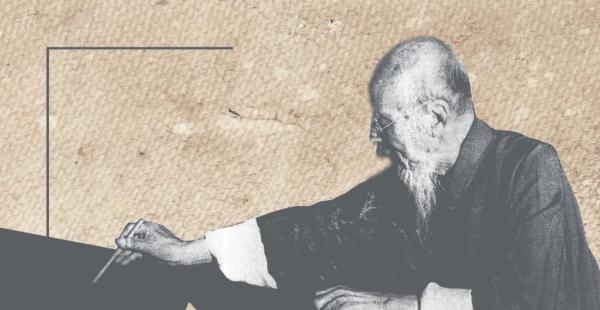
On November 26, "When the Stars Are Brilliant - Special Exhibition of Calligraphy and Painting by Four Kings Wu Yun and Four Monks" was held at Long Museum (West Bund). As one of the tenth anniversary exhibitions of the Long Museum, the exhibition presents the collection of ancient Chinese paintings and calligraphy in the Long Museum, including Wang Shimin, Wang Jian, Wang Hui, Wang Yuanqi, Wu Li, Yun Shouping, Bada Shanren, Shi Tao, More than 30 pieces (groups) of works by Hongren and Kun Can, nearly half of which are exhibited to the public for the first time.
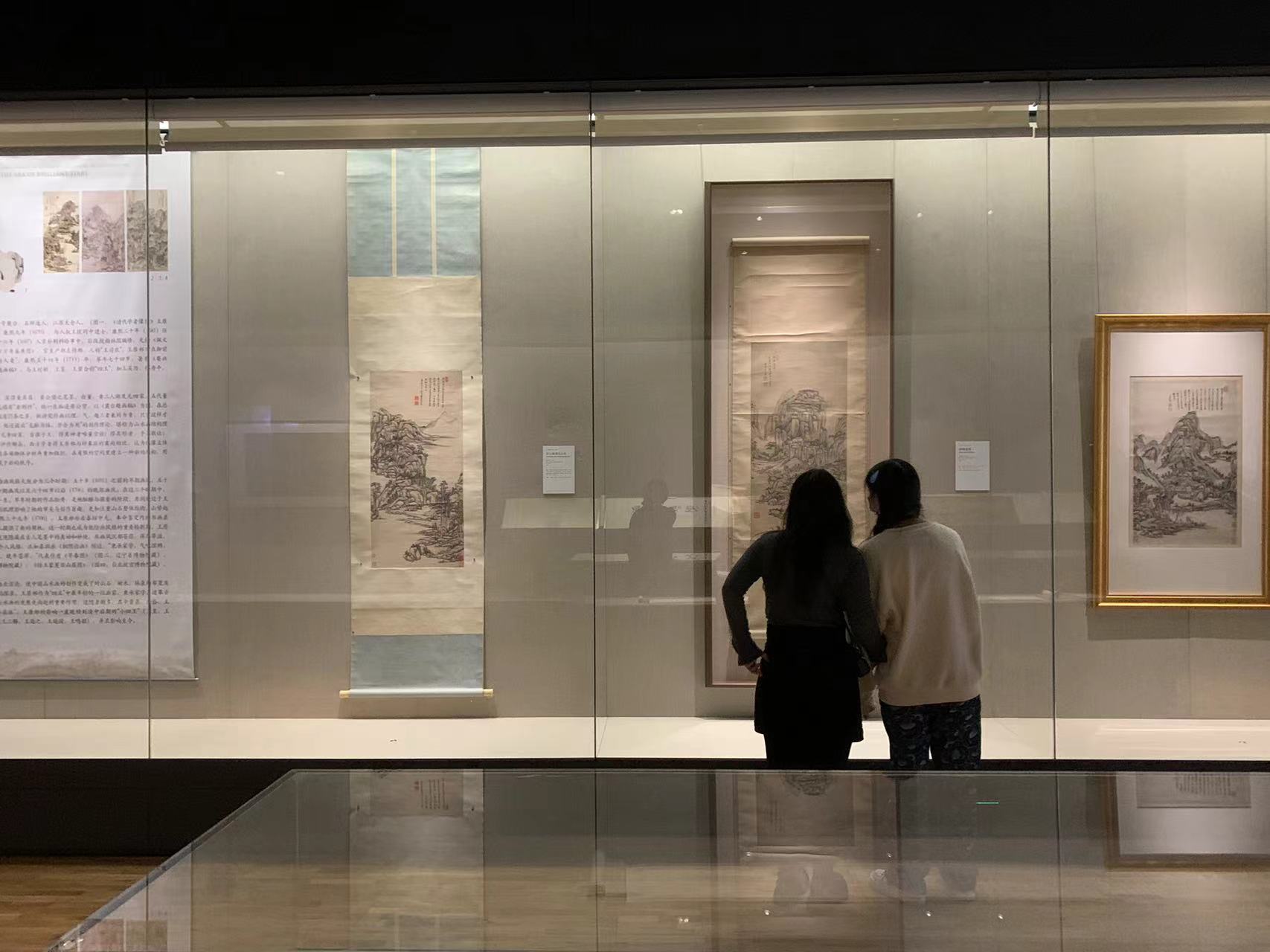
exhibition site
The title of the exhibition "When the Stars Are Brilliant" was inscribed by Liu Yiqian, the founder of the Long Museum and the chief curator of the exhibition. Regarding the "Four Kings Wu Yun" and "Four Monks" Liu Yiqian believes that they are the representative figures connecting the past and the future of traditional Chinese painting. It is a summary of Chinese paintings since the Sui, Tang, Song and Yuan Dynasties, and it is also a standard model for modern Chinese traditional paintings. Having collected calligraphy and painting for nearly 30 years, Liu Yiqian recalled the first ancient calligraphy and painting he collected and mentioned Wang Yuanqi's "Clear Peak and Emerald Green" in the exhibition. In 1995, he bought it at a price of 110,000 yuan. In 2005, in order to support the newly established "Kuangshi Auction", he took out his collection and put it up for auction, and it was hammered down at 2.5 million yuan. Two years ago, when he appeared in Guardian, Liu Yiqian bought it for 8 million yuan. Repurchase.
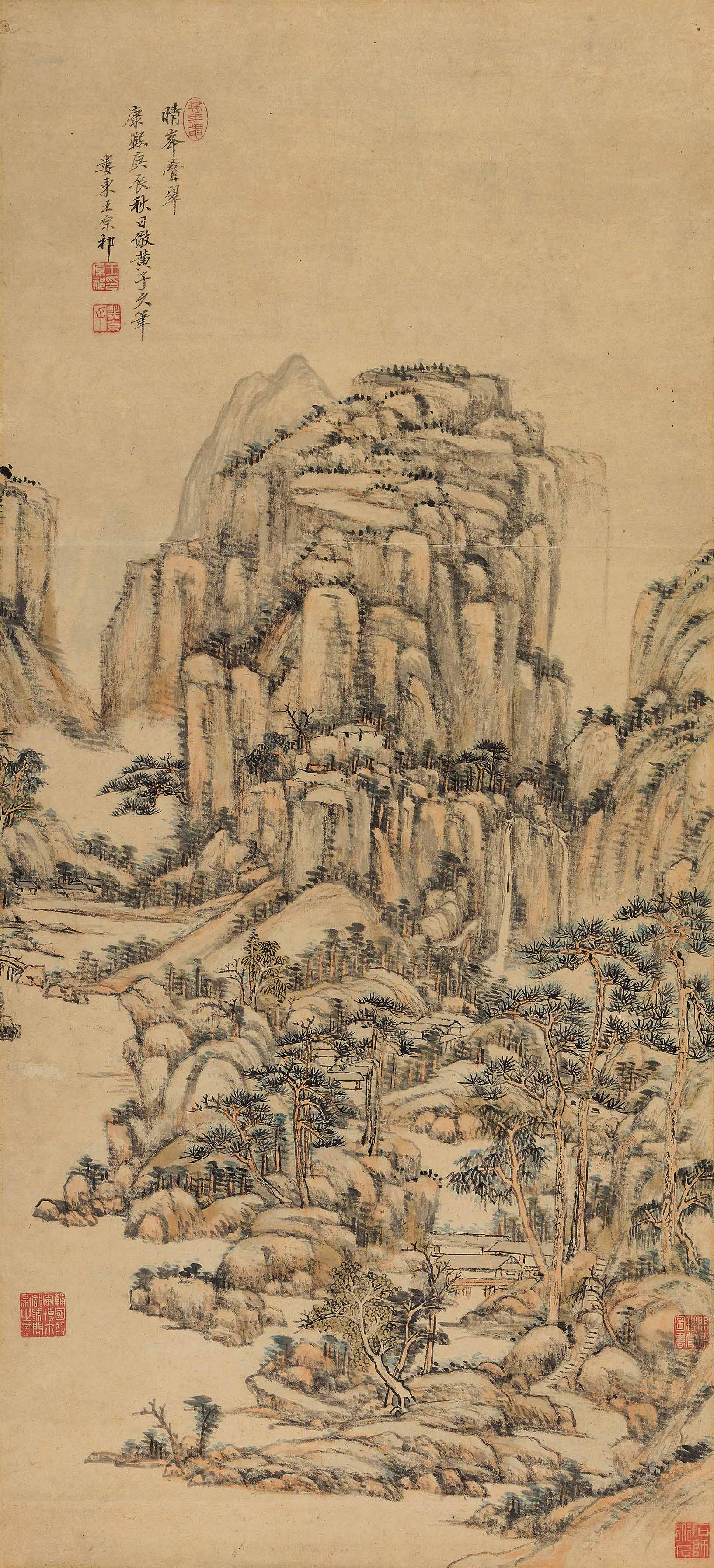
Wang Yuanqi "Clear Peaks and Emerald Greens" 102x46.5cm vertical scroll ink and color on paper
The "Four Kings" refer to Wang Shimin, Wang Jian, Wang Hui, and Wang Yuanqi, who are generally considered to be "orthodox". In addition to the similar style of painting, the four also have deep friends, teachers and students, and kinship. Together with Wu Li and Yun Shouping, they are also called "Four Kings Wu and Yun". A relationship diagram in the exhibition tells the origin of their relationship.
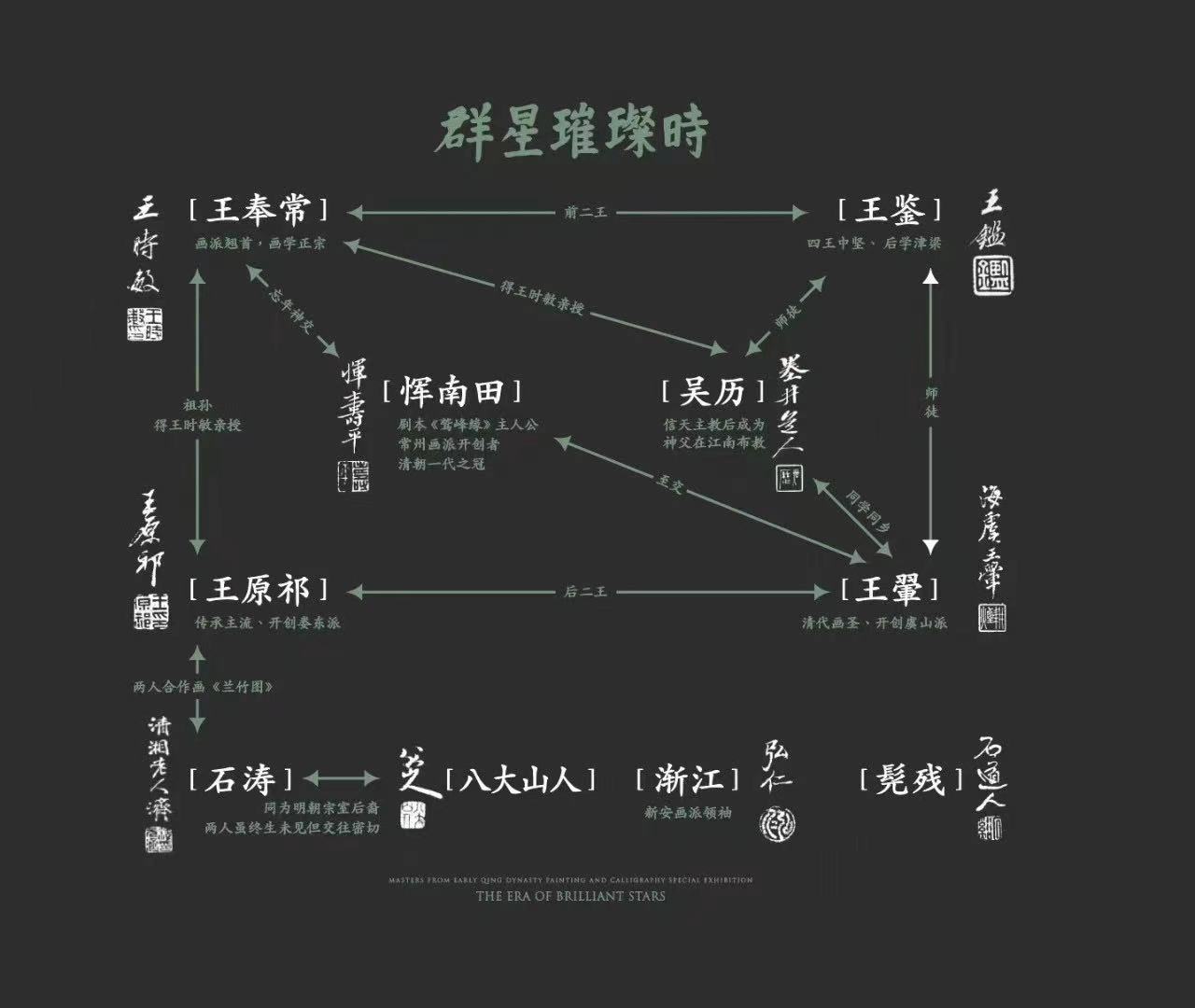
"Four Kings Wu Yun" and "Four Monks" relationship map, produced by: Ah Zhou
Wang Shimin, a native of Taicang, Jiangsu, is the grandson of Wang Xijue, the chief assistant of the cabinet during the Wanli period of the Ming Dynasty. Because his grandfather had a good personal relationship with Dong Qichang, Wang Shimin was taught by Dong Qichang when he was young. A volume of "Landscape Painting Lesson Drawings" by Dong Qichang, now in the Palace Museum in Beijing, is said to have been written by Dong Qichang for Wang Shimin;
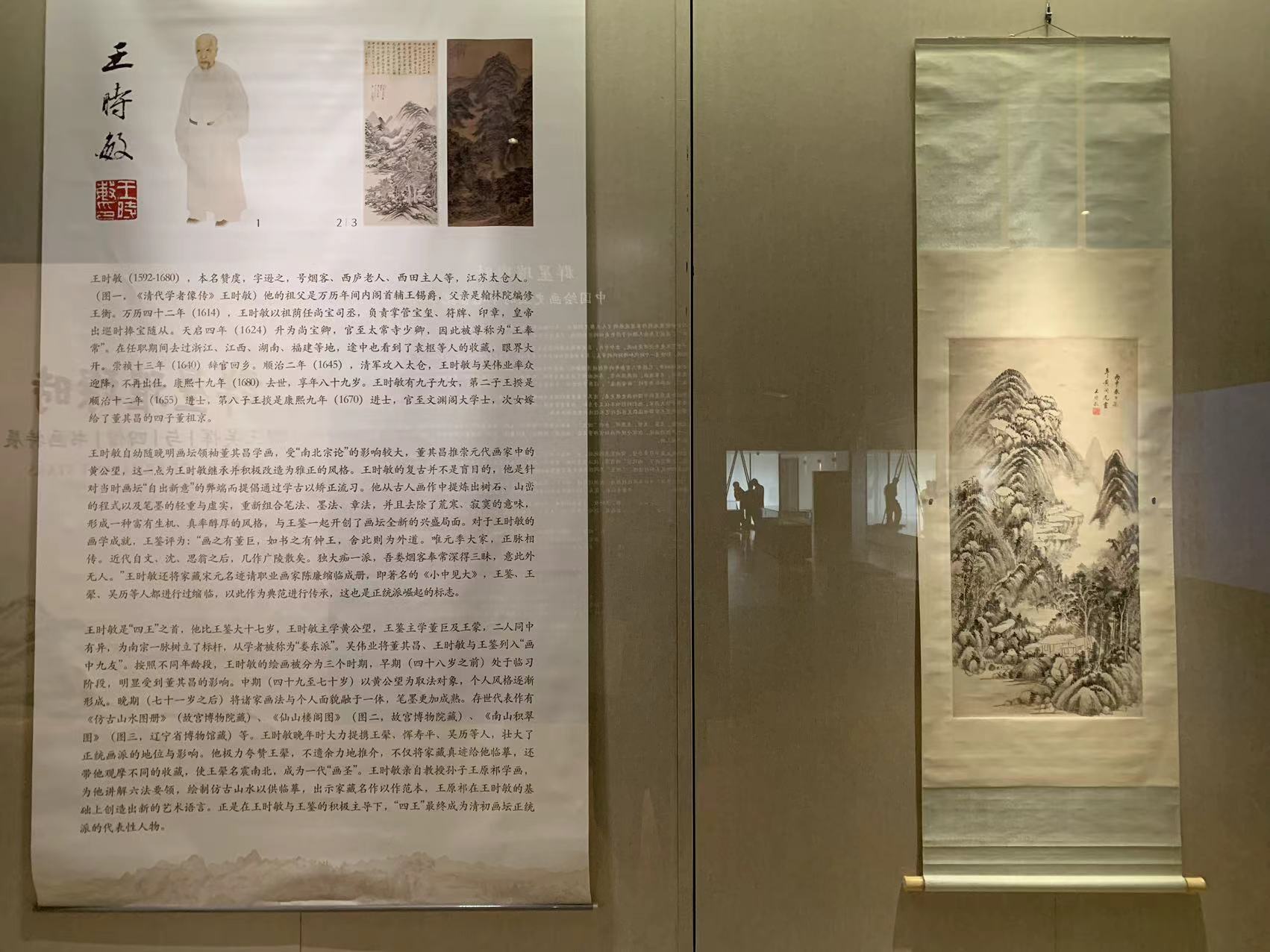
Exhibition site, Wang Shimin's introduction and works.
Wang Hui, courtesy name Shigu, nicknamed Gengyan Sanren, was born in Changshu, Jiangsu. At the age of 19, his talent for painting was discovered by Wang Jian, who later recommended him to learn painting from Wang Shimin. After middle age, Wang Hui became famous all over the world. He was once recommended to the palace and presided over the drawing of Emperor Kangxi's "Southern Tour". He was known as the "Painting Saint" of the Qing Dynasty. Wang Yuanqi is the grandson of Wang Shimin. He showed amazing talent in painting in his early years, and was carefully cultivated by Wang Shimin. He eventually became the most influential figure in the Loudong School of Painting.
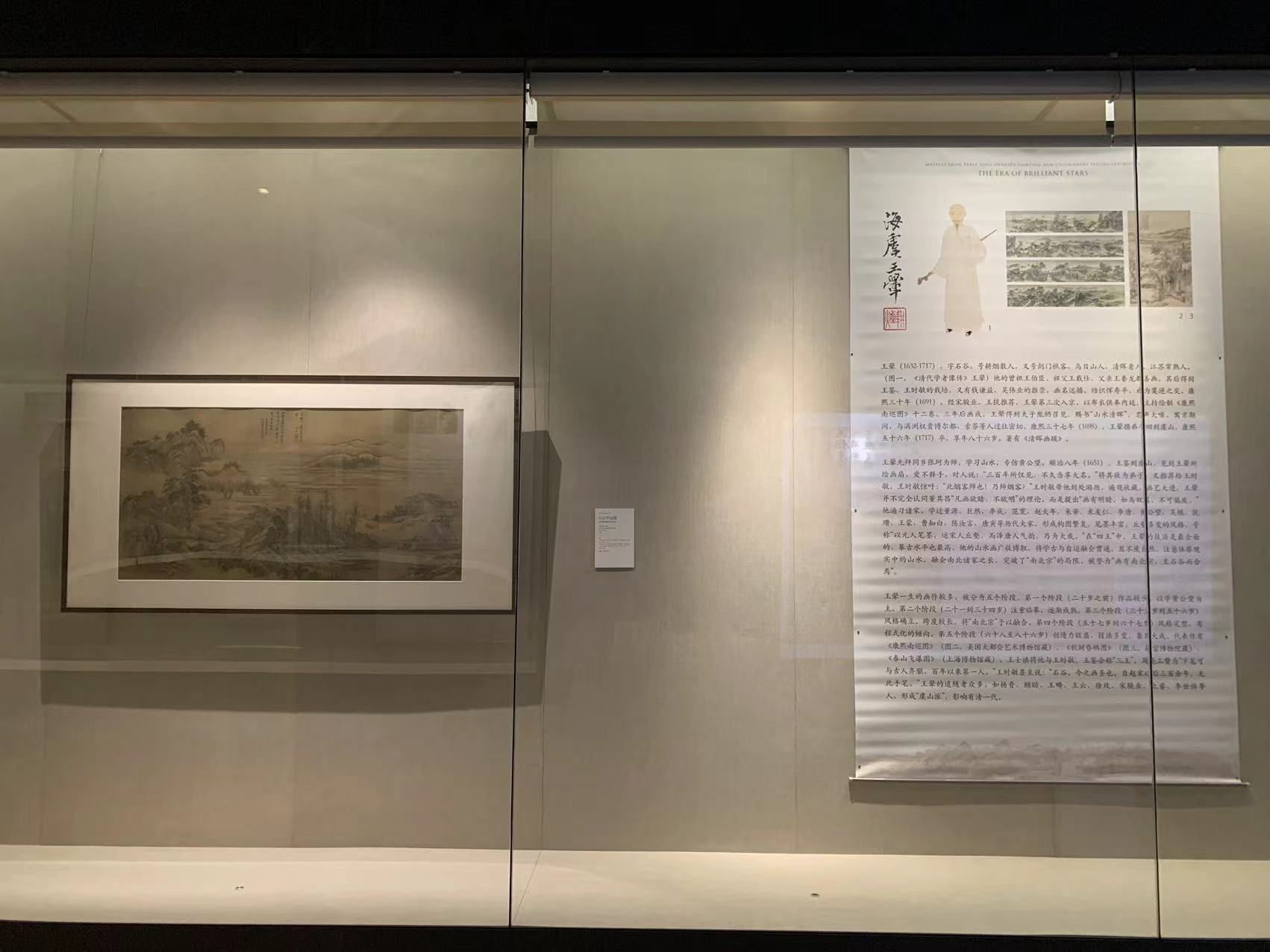
Exhibition site, Wang Hui's introduction and works.
The two major painting schools of Loudong and Yushan formed around these four painters have had a great influence in the history of Chinese art for nearly 300 years, and are regarded as the orthodox painting schools in the history of art.
Wu Li is a fellow villager of Wang Hui. He studied painting with Wang Shimin probably earlier than Wang Hui. He was a priest (priest). An important example of cultural exchange and integration. Yun Shouping is good at both landscapes and flowers and birds, but he has achieved the greatest achievement in revitalizing the flower and bird tradition since the Five Dynasties and developing the boneless method of painting flowers and birds.
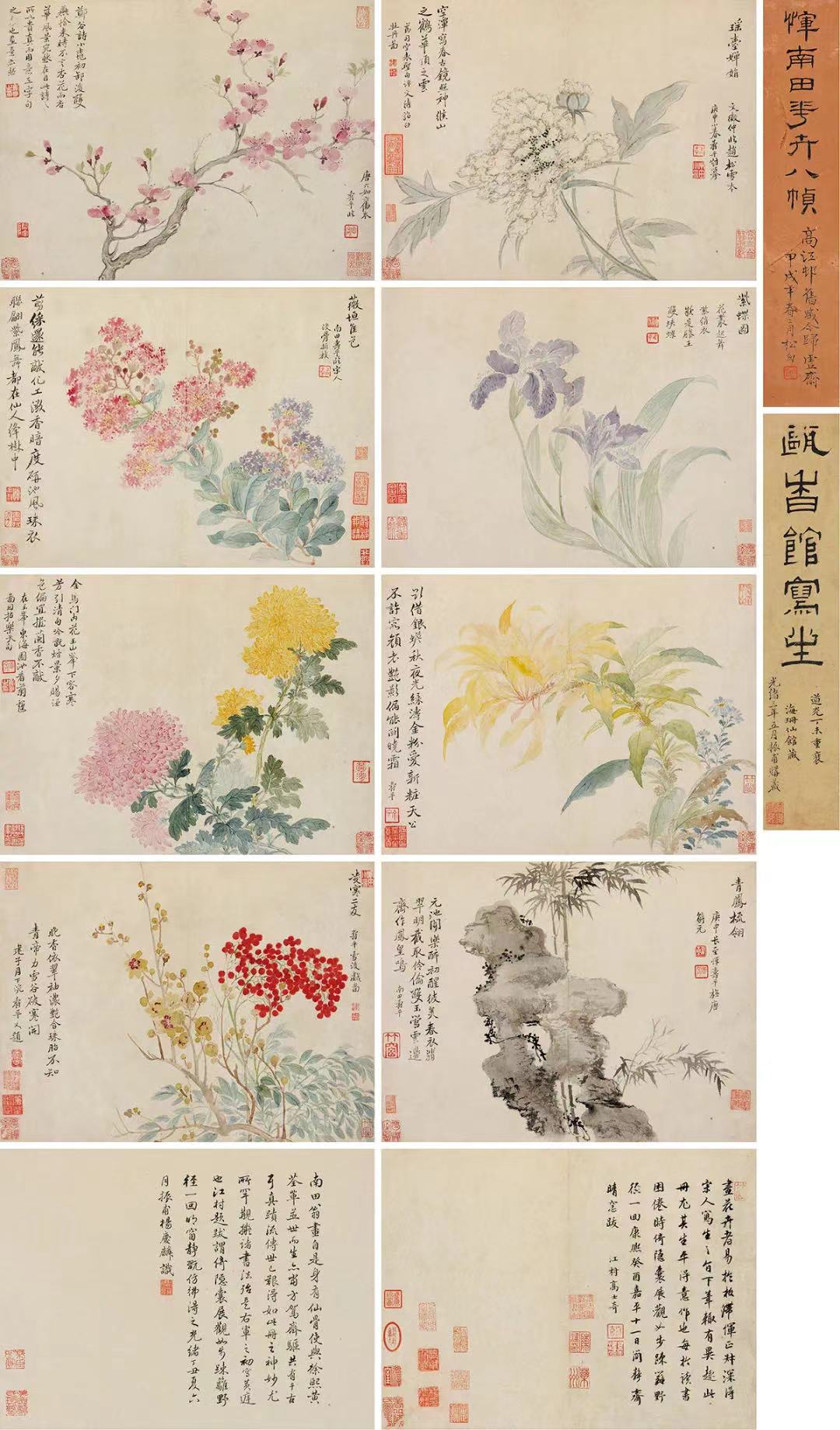
Yun Shouping, "Flower Book", 26x34cmx8 album leaves, ink and color on paper, private collection
In addition to personal appearance, antique imitation is an important feature of the works of the "Four Kings". Wang Shimin once reduced the famous works of Song and Yuan Dynasties in his family collection into "Xiao Zhong Jian Da Chuan", and Wang Jian, Wang Hui, Wu Li and others have all reduced Pro, take this as a model for inheritance. From the paintings of the ancients, they extracted the patterns of trees, rocks, mountains, and the weight and reality of brush and ink, recombined brushwork, ink, and composition, and removed the meaning of desolation and loneliness. The few known copies of "Seeing the Big Book in the Small" are all hidden in public museums. This exhibition of the antique picture album of the "Four Kings" can be said to be an important practice of the concept of "seeing the big in the small".
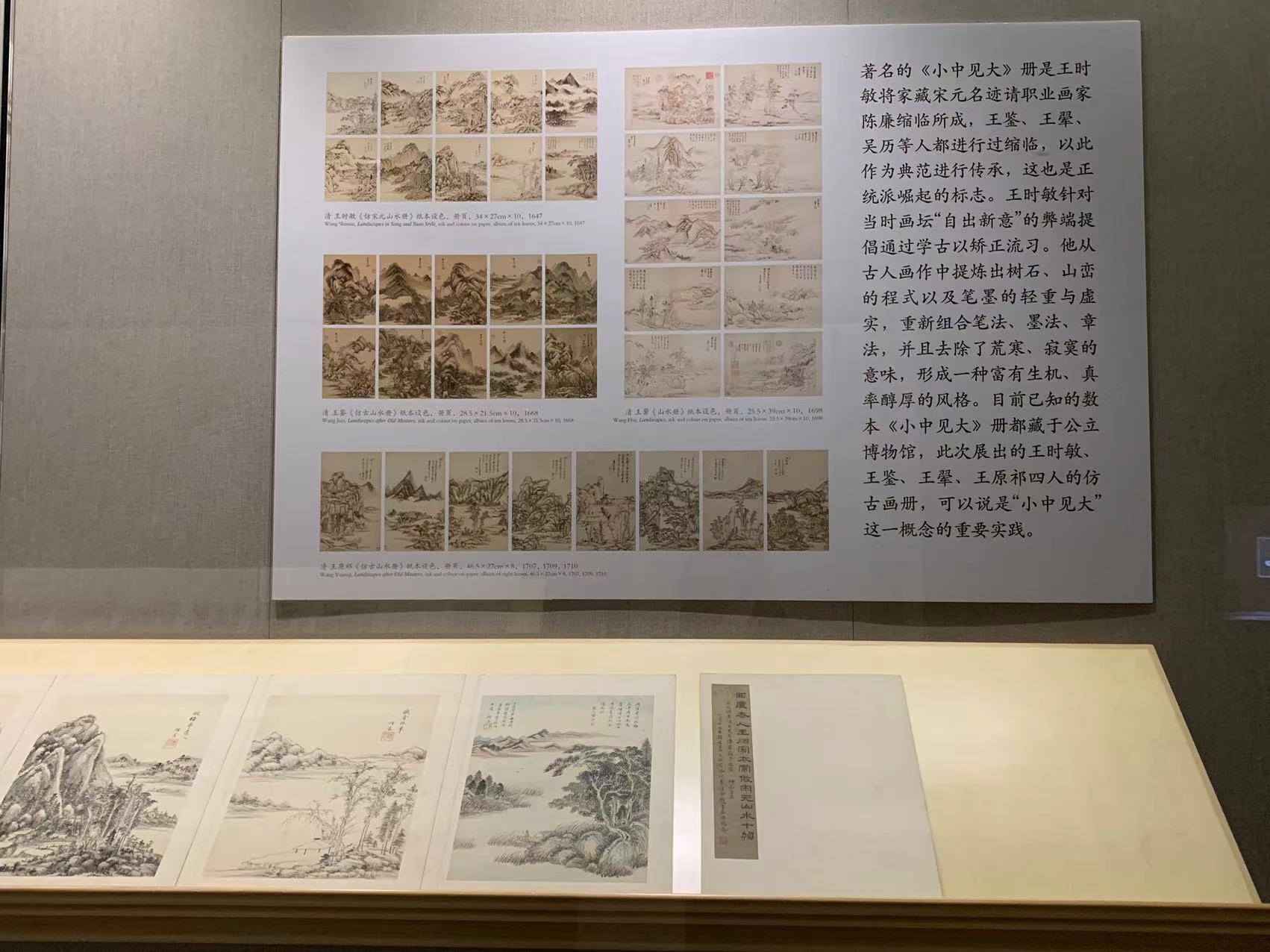
Introduction to the exhibition "Small in the Big Book"
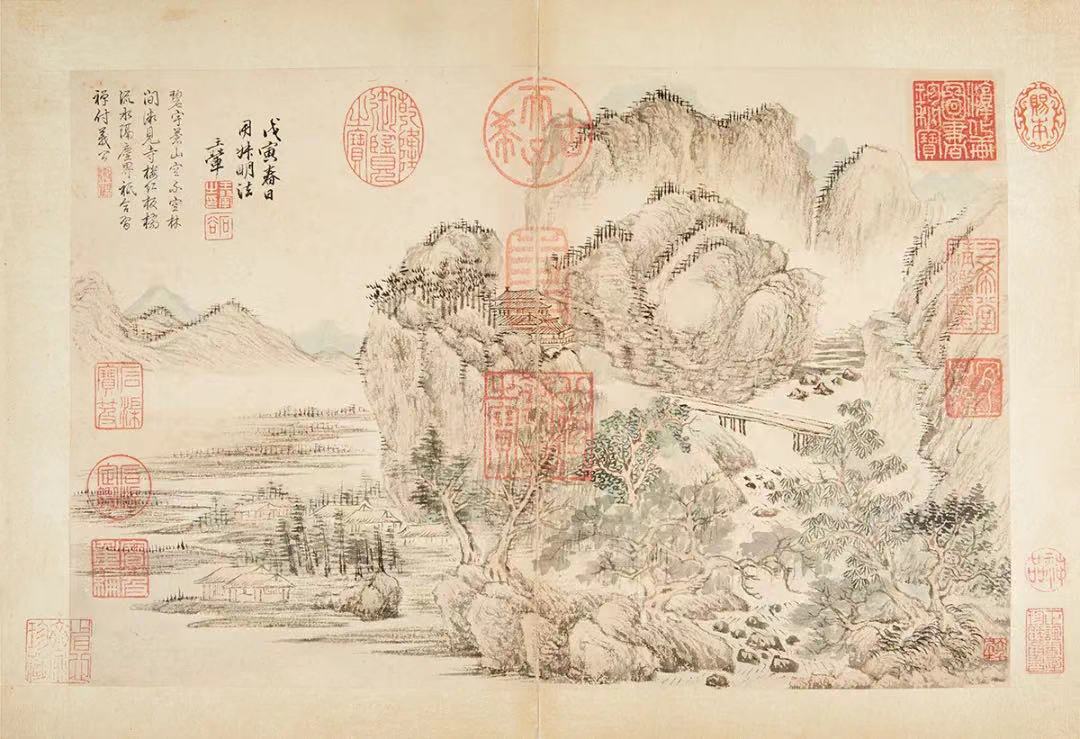
Wang Hui, Detail of "Book of Landscapes", 25.5x39cmx10, album leaves, ink and color on paper, 1698
However, the "Four Kings" have not always been the same. The introduction of modern Western painting set off a wave of art revolution in Chinese painting circles. As representatives of feudal art, the "Four Kings" were fiercely criticized by innovative artists such as Xu Beihong, Liu Haisu, and Lin Fengmian. In the article "Art Revolution", Chen Duxiu also clearly proposed to "reform the life of the king's painting", and his rigid and repetitive style
It became the target of public criticism for a while. Until the 1980s and 1990s, these objectively positioned the "Four Kings" in the overall context of the development history of Chinese painting, and re-recognized the respective brush and ink formulas of the "Four Kings", but those who criticized the painting of the Four Kings often I will compare Song and Yuan paintings with the Four Kings.
Since 2010, the Shanghai Museum's "Nanzong Zhengmai" and the Palace Museum's "Four Kings' Painting Special Exhibition in the Early Qing Dynasty" have allowed more people to face the brush and ink of the "Four Kings". Compared with the connection between the Song and Yuan Dynasties and the natural landscape, the scenery in the works of the "Four Kings" is relatively stylized, but their subtle brushwork and inheritance of tradition are admirable.
At the end of 2018, the Shanghai Expo's "Danqing Treasure Raft: Dong Qichang's Calligraphy and Painting Art Exhibition" traced back to the Song and Yuan Dynasties with Dong Qichang, and extended to the "Four Kings". At the same time, he does not evade the unavoidable problem of fakes in the appraisal of ancient calligraphy and painting, and pays attention to the artists related to Dong's calligraphy and painting ghostwriting and forgery. If we extend the inheritance of calligraphy and painting sorted out by Dong Qichang Exhibition to the works of the "Four Kings" and their era in this exhibition, we can experience a more three-dimensional origin of Qing Dynasty painting.
In contrast to the "orthodox faction" represented by the "Four Kings", the "Four Monks" Shi Tao (Yuanji), Zhu Da (Bada Shanren), Hongren (Jianjiang), and Kun Can (Shixi) were considered to be unconventional , representing the power to face oneself, face nature, and face spirituality.
Among the "Four Monks", Bada and Shi Tao are the most well-known descendants of the Ming clan. The portrayal of his mentality of "white eyes to people" at the Eighth National Congress of the Communist Party of China. He puts his love on painting and expresses his nostalgia for the old dynasty with calligraphy and painting; The unrestrained and unique style, through the infiltration of ink and the fusion of brush and ink, shows the dense atmosphere and profound state of mountains and rivers. He advocated that "using the past to open up the present" and "I use my own method" are of great significance in the history of Chinese painting.
Jian Jiang and Kun Can are survivors of the Ming Dynasty. Kun Can Shanshui also learned from the four masters of the Yuan Dynasty. On the basis of learning the tradition, he attached great importance to learning from nature. He often stops at famous mountains and great rivers, and likes to use thirsty brushes to paint his hair with thick and light ink, so that the brush and ink blend together to form a lush, hearty taste and vigorous momentum.
Jian Jiang likes to imitate Ni Zan and learn more about the wonderful scene, and the sparse and light artistic conception of his pictures resonates with his desolate life experience. There are three exhibits in this exhibition that are not in the collection of the Long Museum, one of which is Jian Jiang's "Collection of Calligraphy and Painting". Liu Yiqian revealed that the Long Museum has not yet collected Jian Jiang's works. "Although there are quite a few works by Jianjiang at the auction, there are very few of them that are worth looking at. The Album of Calligraphy and Painting is the only one that Jianjiang thinks is good in recent years." Liu Yiqian said, "It appeared in the auction at that time. After the bidding price exceeded 50 million, it became a battle between two or three people, and finally this "Collection of Calligraphy and Painting" was acquired by a friend at a price of 130 million." The addition of this work on loan from a friend made the exhibition gather ten winners painter. This is just as the curator Xie Xiaodong said: "It is not easy for the Long Museum to hold this exhibition. It not only needs financial support, but also a great opportunity, especially the wonderful 'Four Kings, Wu Yun' and 'Four Monks' There are not many works, so it takes a long time to wait."
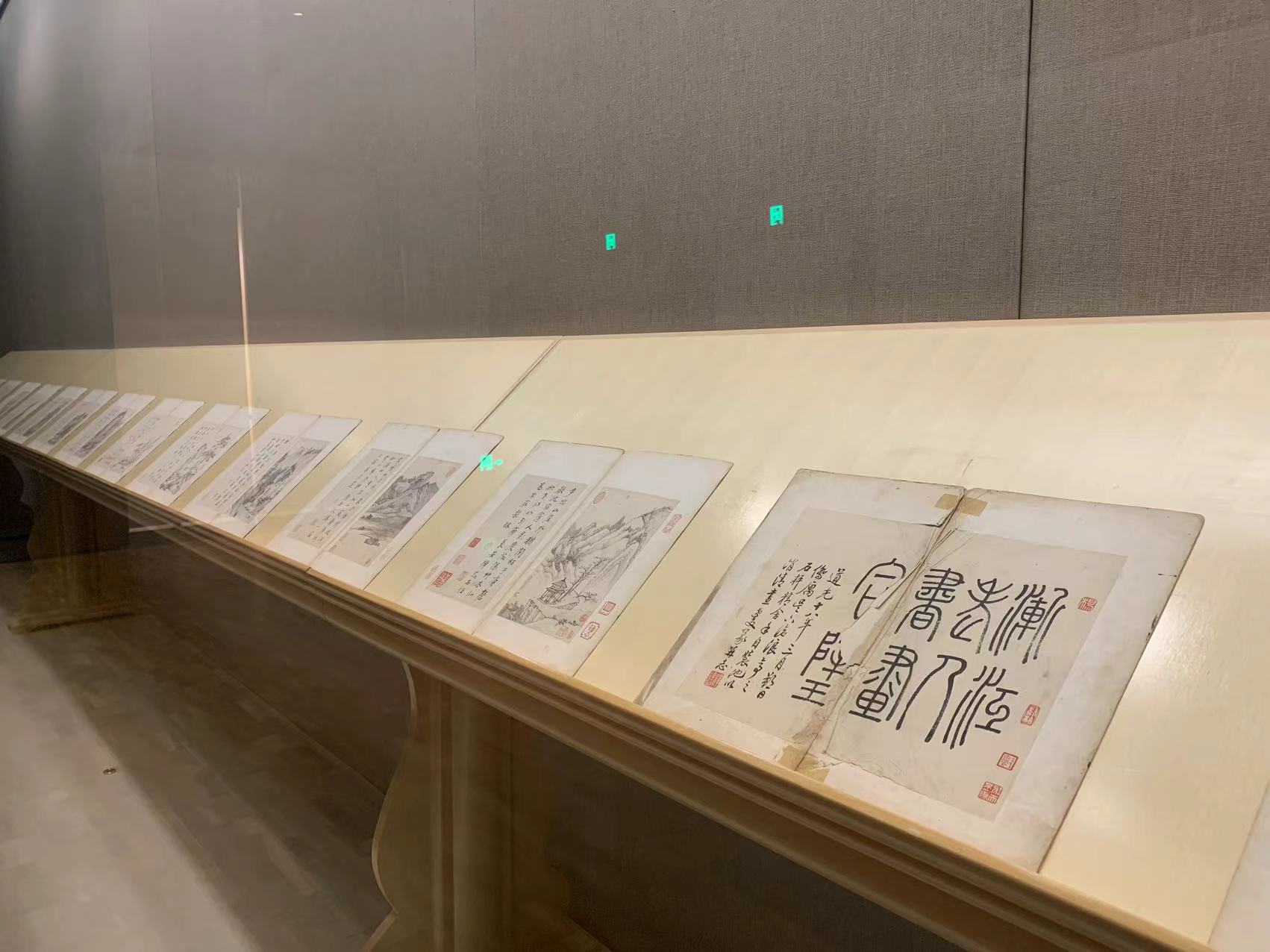
Exhibition site, Jian Jiang's "Collection of Calligraphy and Painting"
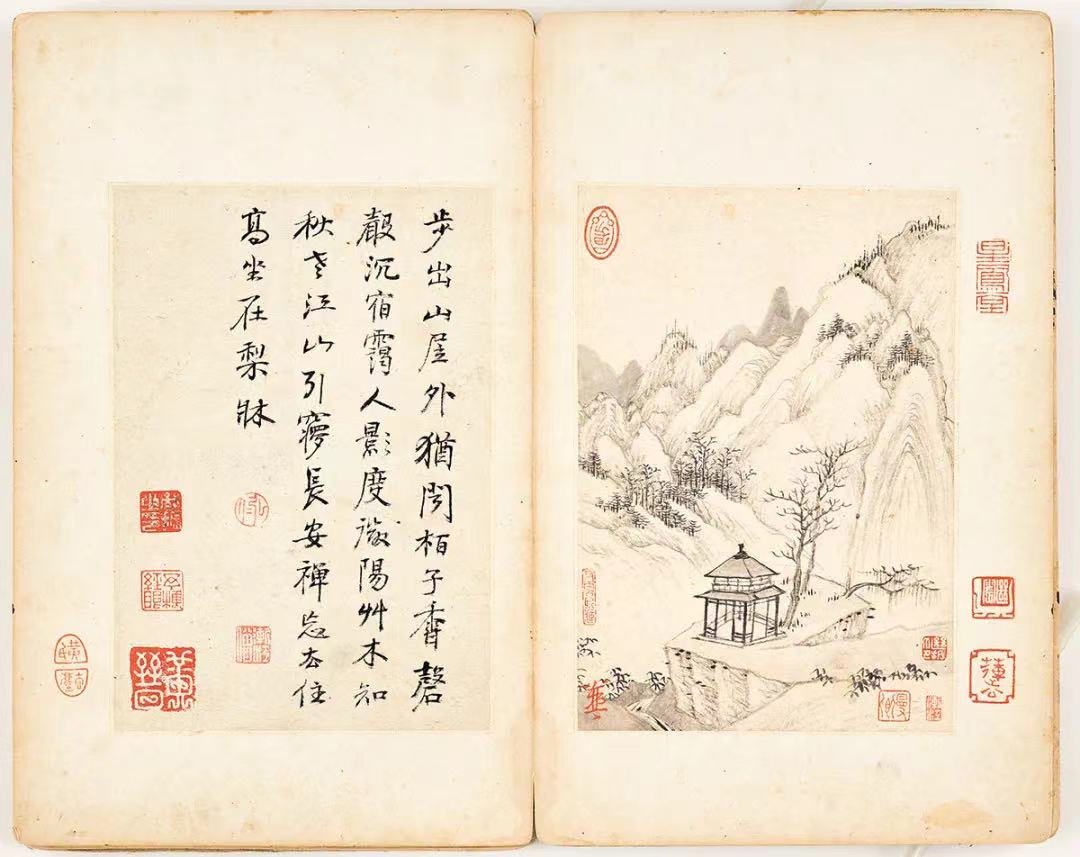
Hongren (Jianjiang), Part of "Book of Calligraphy and Painting", 18.7x13cmx19, album leaves, ink and color on paper, Qing Dynasty, private collection
This year marks the tenth anniversary of Long Museum. "When the Stars Are Brilliant - Special Exhibition of Calligraphy and Painting of Four Kings, Wu Yun and Four Monks" is the launch of "Southern Zhang Beiqi - Special Exhibition of Zhang Daqian Qi Baishi Calligraphy and Painting Art" in September and "Existing in the World" and "Multiple Landscapes" in mid-November The special exhibition is the fourth in the tenth anniversary series. According to Wang Wei, Director of Long Museum, the 10th anniversary plan will continue to launch 10 series of exhibitions, and the time will span to next year.
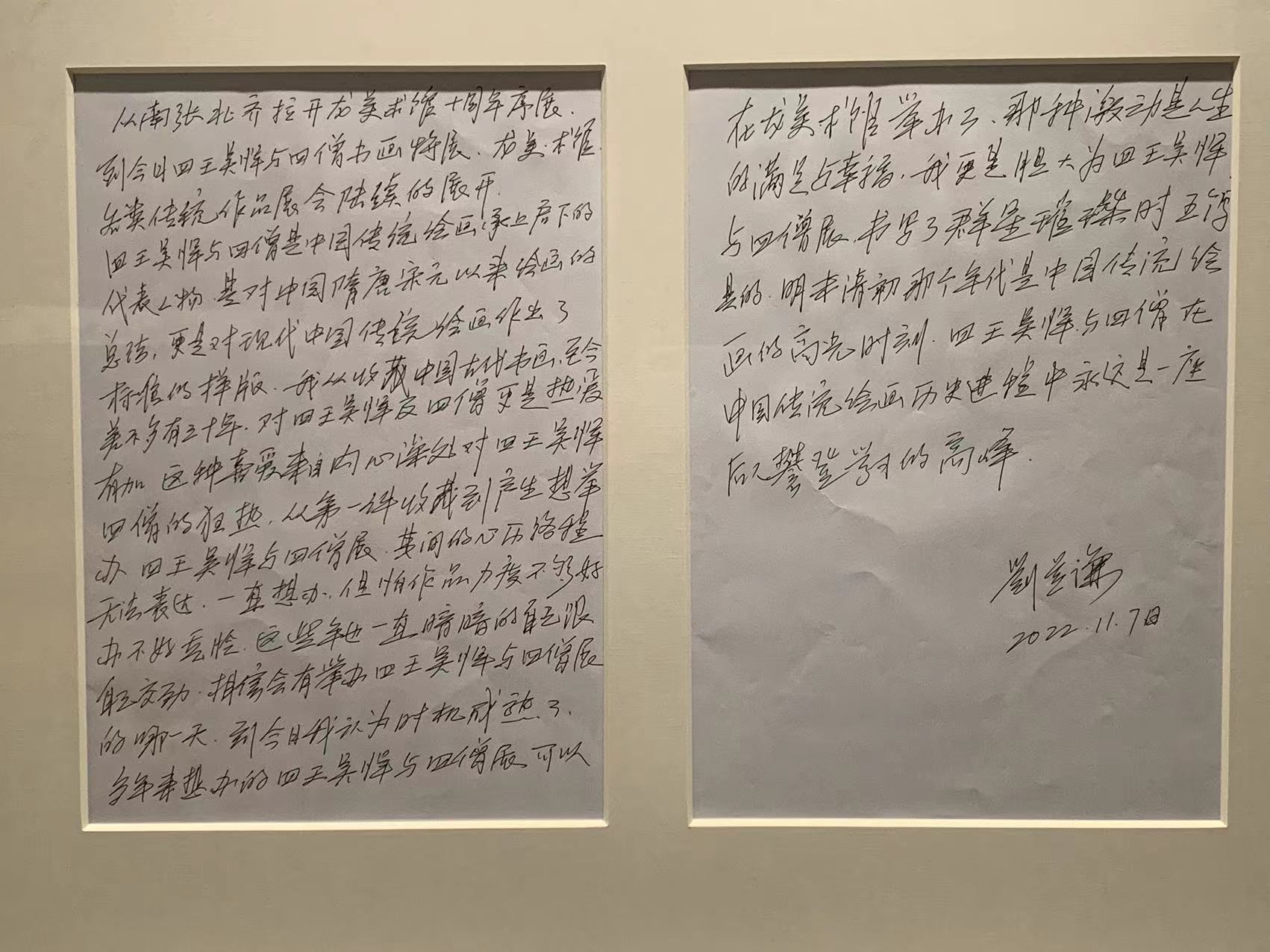
Preface manuscript of Liu Yiqian exhibition
"Existence in the World" and "Multiple Landscapes" Long Museum's 10th Anniversary Special Exhibition will be on display until February 5, 2023; "When the Stars Are Shining - Four Kings, Wu Yun and Four Monks Calligraphy and Painting Special Exhibition" will be on display until 2023 February 28


